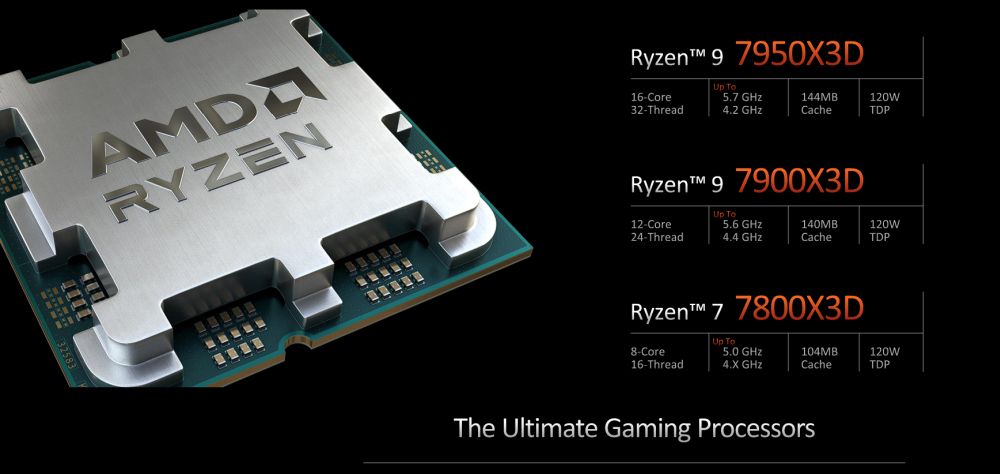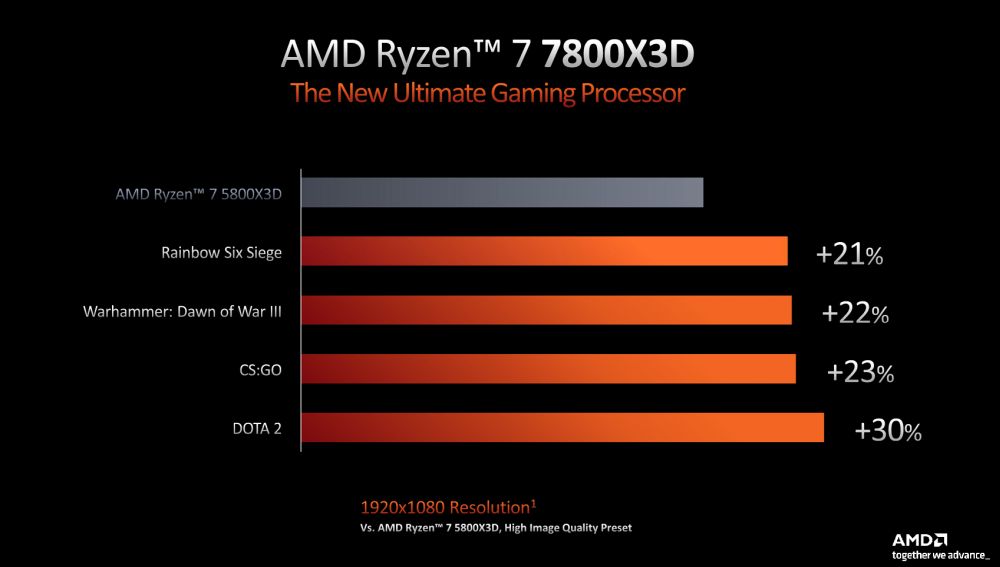AMD had a lot of success with 3D V-Cache back with Zen 3 and it does not come as a surprise it wants to do it again, this time with three new SKUs, the flagship 16-core/32-thread Ryzen 9 7950X3D, the 12-core/24-thread Ryzen 9 7900X3D, and the 8-core/16-thread Ryzen 7 7800X3D.
The flagship Ryzen 9 7950X3D, as noted, is a 16-core/32-thread SKU that boosts up to 5.7GHz, and has a total of 144MB of L2+L3 cache.
The 12-core/24-thread Ryzen 9 7900X3D boosts up to 5.6GHz and has 140MB of cache, while the 8-core/16-thread Ryzen 7 7800X3D boosts up to 5.0GHz and comes with 104MB of cache.

There has been some confusion regarding the 3D V-cache, or the total amount of cache, but it has been pretty much confirmed that AMD went for a rather asymmetric cache setup, where only one of the two CCDs comes with 64MB of 3D V-Cache. The confirmation comes from AMD's renderers of the processors, showing a single CCD with a 3D V-Cache. Of course, there is a possibility that rendering is not correct, in which case the 3D V-cache is halved down to 32MB per CCD.

Bear in mind that this does not include the Ryzen 7 7800X3D which has a single CCD, ending up with 104MB of total cache (1MB of L2 per core and 96MB of L3 cache, or 32MB on-die and 64MB stacked 3D V-cache). This is probably why AMD used the Ryzen 7 7800X3D as "the world's best gaming processor" in its presentation.
In terms of performance in games, the Ryzen 7 7800X3D gets anywhere between 21 to 30 percent higher performance compared to the Ryzen 7 5800X3D. Of course, this is enough also to beat Intel's Core i9-13900K (and probably the KS version as well).

As noted by AMD, all three SKUs should be available in February 2023. Unfortunately, we did not get any price information so far.




